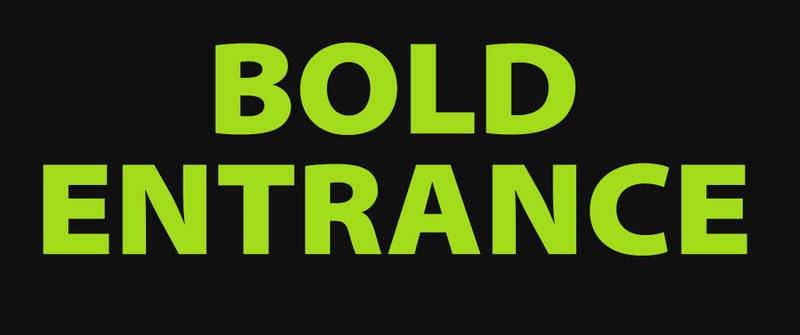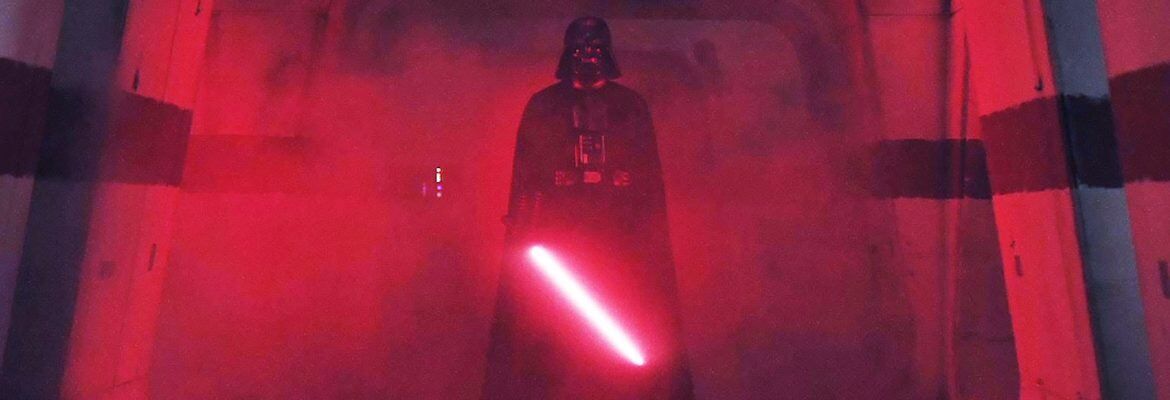Darth Vader In Rogue One: The Secrets Behind That Badass Corridor Scene
We finally got the bad ass fight scene we’ve always with Darth Vader in Rogue One. Under the helm of director Gareth Edwards, Rogue One gave the Dark Lord of the Sith his most bad ass moments in then entire Star Wars saga. Edwards, himself an unapologetic Star Wars nerd, knew how to please Star Wars fans geeks everywhere. For decades fans talked about unused drawings made by legendary concept artist Ralph McQuarrie, such as his castle on Mustafar. Not only did they get to see him strolling inside it, but they also got to see his horribly disfigured, and burnt body (or what’s left of it) being lowered into the Bacta tank.
But the most talked about scene featuring Darth Vader in Rogue One, where he massacres Rebel soldiers while trying to retrieve the Death Star plans, nearly didn’t happen. While Edwards and editor, Jabez Olssen were cutting the film, Olssen suggested that Vader just wasn’t bad ass enough in the film.
With only four months to go before the film’s release, Olssen pitched the hallway scene to Kathleen Kennedy. She loved the idea.
They blocked out three days to film the sequence.
Inside Vader’s castle on Mustafar
Brainstorming and Visual Milestones
“The way I like to work is you try and come up with visual milestones of like, “Well, I’d love to see this and I’d love to see this and I’d love to see this,” Edwards told Wired. “I’m not sure how they all connect. And what you do is you create visuals of things that would be great and then you try and find a way of linking them all in.”
The first thing they did was brainstorm cool shots that would like to see. ‘ I really like the idea of them all being trapped, and that Vader’s going to kill every single one of them, and potentially the only thing that can escape is the card that Princess Leia gives to R2-D2.”
But Edwards also made sure that anything Vader did in the sequence had to have been done in previous films, such as force choking, levitating people, and slashing him with his lightsaber. No knew abilities were given to him.
Edwards liked the idea that the only thing that can escape Darth Vader is the Death Star plans.
Creating the Death Star Plans
The corridor sequence recalls the first sighting of Darth Vader in A New Hope after he boards Princess Leia’s ship. The corridor sequence is also the first time we see the MacGuffin of the film: the Death Star plans.
Edwards explained that no prop remains from A New Hope of the plans. They had to determine as close as they could what the plans look like from a watching Princess Leia insert the disk into R2-D2 from a close-up on the Blu-ray of A New Hope.
“…[T]hat’s all we had to base this card on. So it looked like they’d made a kind of credit card, but also with a disk in it, like a gold disk.
The Props Department, you know, suggested a few different ideas of trying to match that perfectly.”
No props of the Death Star plans existed, so Edwards analyzed a close-up of the Death Star plans in a blu-ray of A New Hope.
Lighting the Scene
Darth Vader makes his horrific presence known to the Rebels when he ignites his lightsaber in the corridor. It’s a dramatic effect. The whole sequence is illuminated by red light.
The DOP, Greg suggested using a ‘real’ lightsaber. Real in the the sense that the prop would light-up like a lightsaber and illumine the corridor. But as is often the case, the scene needed extra help from the lighting department to create the desired effect.
“…[W]hen you turn it on, you just see the lightsaber, you can’t see Vader, you just see the lightsaber,” said Edwards. “So we put a light behind Vader and smoked up the background, so that as it was synchronized, as the lightsaber turns on, the background illuminates and you see the silhouette ’cause it feels like the most iconic thing about Vader is that silhouette.”
Camera Shots
The corridor sequence continued the amalgamation of classical and modern techniques to give it that continuity with A New Hope, while still giving audiences the experience of a modern film.
“We tried to do a mixture of the very classical, very considered camera moves, you know, that you saw in the original trilogy,” Edwards explained, “and then sort of more frenetic, handheld, sort of embedded photography and this sequence, I really like the way it sort of inter-cuts both styles and I think that contrast is what keeps it energetic.”
There’s no doubt that Edwards is an intuitive director. Under the gun, he made the right decisions to bring the scene together from conception to finished and in the can in just three days. The end result is that this one scene of Darth Vader in Rogue One rivals all his other appearances in the original trilogy.

